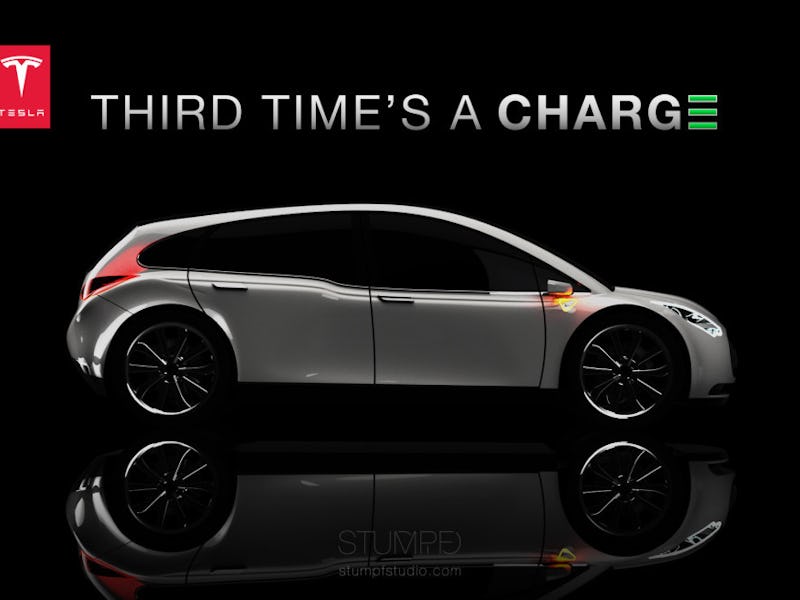What's Next for Elon Musk's Tesla Model 3
Will the newest electric EV crack the market in time of affordable gas?

Cheap gas is bad for hybrid loyalty. According to Edmunds’ tracking, last year, as oil prices were plummeting, about 55 percent of hybrid and electric car owners traded in their vehicles for old-fashioned gas-guzzlers — and one in five of those went for an SUV. With just weeks until March when the Tesla Model 3 is expected to be unveiled for pre-order, what can Elon Musk’s new model offer to get people driving greener vehicles?
Ludicrous Speed
Without technical details, we can only speculate on what we’ll see this March when the Model 3 is officially unveiled, but as the Model S’s upgrade to 762 horsepower (762!!!) with Ludicrous Speed, it seems reasonable the Model 3 will at least match it. That means you’ll be rocketing towards the horizon going 0-60 in 2.8 seconds, or, to put it another way, accelerating faster than if you dropped a Model S out of a plane. Musk promises an even faster Maximum Plaid mode in four years time, but Spaceballs fanatics will just have to wait on the upgrade.
Decent Range
Considering the speed, it won’t take you long to eat up a charge on an open road. Musk has said the Model III will have a range of at least 200 miles on a full charge, telling Auto Express: “We want people to fall in love with their car and look forward to driving it.” The car will also be flagrantly aerodynamic; Musk reportedly has told his designers to get the body driving with a drag coefficient under .20. Model 3 owners will have free access to Tesla’s Supercharger network, which can now carry you all the way up and down the United Kingdom. The company installed its 500th supercharge station in 2015, mostly in the states where the Tesla sees its biggest sales. You shouldn’t be in danger if you’re driving through the northern midwest, but God help you if your route takes you through Missouri, Arkansas, or Mississippi.
Sort-of Affordability?
According to Cars Direct, the typical cost of a hybrid sedan is somewhere between $23,000 and $35,000, and the Model 3 will reach the high end of that without incentives. At half the cost of the Model S, the predicted $35,000 base model sticker will make the Model 3 just barely mass market. The average transaction price for new cars in July 2015 was $33,340, so it’ll be a little more than most people want to spend regardless of how much they want to save the planet. Dealers will be leaning hard on the fuel saving costs (themselves questionable) to make a sale. Meanwhile, Chevrolet wants its Bolt in the showroom for just $30,000.
Autonomous Driving
Conservative speculation has put self-driving cars five years away. Musk might blow everyone away in March if he announces a Model 3 autopilot. He tipped his hand in this Fortune interview, telling the magazine that autonomous cars were just two years from being road-ready. “I think we have all the pieces, and it’s just about refining those pieces, putting them in place, and making sure they work across a huge number of environments — and then we’re done,” Musk told the magazine. “It’s a much easier problem than people think it is. But it’s not like George Hotz, a one-guy-and-three-months problem. You know, it’s more like, thousands of people for two years.” An autopilot version would easily jack the price up into the $45,000 range. Whether they can get a working autonomous model on the road doesn’t solve the regulation problem, optimistically assuming lawmakers get ahead of the tech.
Couture Auto
To achieve Musk’s demands on drag — the lowest for any mass-produced car — the Model 3 will have to have a unique design. During a Reddit AMA, Musk would say only that the design “won’t look like any other cars.” What does that mean? Covered wheels? A single blade windshield wiper? A mattress interior for all the car sex that’ll be going down? Optional muzzle restraints for the kids? We’ll find out in March.